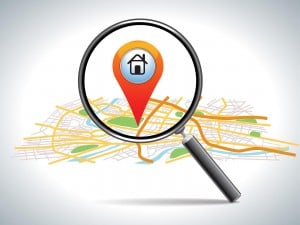There has been a lot of 'argument' over the last decade about whether investors get better results from investing in inner or outer suburbs.
Investors who seek higher yields have often said things like: "Over the last couple of years, outer suburbs have shown better growth".
It's true that if you cherry-pick data to support your pre-conceived viewpoint, then you can always torture the figures until they confess.
Accountants do that kind of thing for a living.
But to get a true picture, go back over the long haul and the results show a clear conclusion.
Ask any experienced investor where the greatest capital growth is found - both in percentage terms and in absolute terms - and they will tell you that over the long haul it is in suburbs located reasonably close to the CBD, where demand is high, close to employment and where the most people want to live (and where there is no land available for release).
I won't reproduce the whole article, but rather link to this piece at The Conversation, which provides the data, detailed explanations and the reasoning - it's well worth a read.
Note that we are absolutely not talking about only long-term capital growth here since the early 1980s - although capital growth has easily been stronger close to the cities - it is also crystal clear that since 2008, the capital growth has been all about suburbs in close proximity to the CBD too.
The charts which prove it are below.
"The biggest cause of increased wealth has been the restructuring of the housing market with increasing demand for inner and middle ring suburbs generating higher prices, a process observed in all Australian capital cities.
Once relatively egalitarian across Australian cities, our property markets have become polarised.
The most affordable homes for lower-moderate income home buyers are now confined to the outer suburbs and will only increase in value at slower rates compared to housing in the more expensive inner and middle suburbs — effectively trapping poorer households on the edges of our cities."
Capital growth across Melbourne suburbs, for example:
And the city's SE corridor:
The northern corridor of Melbourne showed similar results.
As did the western corridor:
The article presents a raft of other research including looking at, for example, suburbs with a lower median price as compared to the city's median - and the median prices with the greatest gains in this instance were in former industrial suburbs close to the CBD.
In the article provides chart after chart which leads to one inescapable conclusion:
"The research suggests that if lower-moderate income buyers purchase in these outer urban and growth zones they will build housing wealth over time, but at a much slower rate than buyers in more expensive suburbs.
This slower rate of capital gains in the growth zones can be seen when comparing their resale prices with inner zone homes.
A startling 36% of growth zone homes sold four to five years after purchase were sold at a loss, while only 9% of inner zone homes were sold at a loss; after six to seven years, 8% of growth zone homes sold at a loss compared with 6% of inner, showing that capital gains growth had caught up with the transactions costs (such as stamp duty and agent fees) involved in buying and selling a property.
The lower rate of capital gain growth means lower-moderate income home buyers risk making a loss if they have to sell early for reasons not entirely of their choosing, such as interest rate increases, loss of job, loss of second income, a need to relocate for employment, or divorce.
These households are also less likely to be able to afford to wait to sell until capital gains growth has negated transactions costs.
As home prices are rising faster in middle and inner zones than in outer and growth zones, it is increasingly difficult for lower-moderate income buyers to improve their housing wealth by trading up to middle and inner areas even if they have accumulated substantial equity in their homes.
This has implications for households who need greater access to public transport, employment, health care and educational opportunities than are available in the outer and growth zones."
Experienced investors have known this for years, of course.
So why do people elect to invest in outer suburbs?
Firstly because it's cheaper and therefore easier to buy.
And secondly because the 'headline' rental yields are higher.
Be wary, however, that cheaper property can variously come with different risks of rental default, vacancies and properties being vandalised - and this can erode the seemingly attractive yield 'on the sticker'.
Over the longer term, rents also tend to grow more substantially in landlocked suburbs where demand in the strongest, so there is no question where the best locations are to invest for the longer term.
For capital growth and stronger returns, look to the land which is in the greatest demand, not to cheap suburbs on the outer.




















